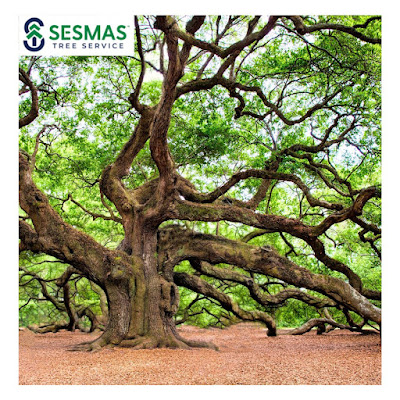10 Tree Trimming & Pruning Tips For Atlanta Homeowners
As homeowners, it's essential to properly maintain the trees on your property to ensure their health and safety. Tree trimming and pruning are techniques used to maintain and shape trees.
Tree
trimming involves removing dead, diseased, or overgrown branches to improve the
overall health and appearance of the tree.
Pruning is a more selective process involving removing specific branches or shaping trees to promote proper growth and structure. Both practices can help prevent damage to the tree and those around it and improve the tree's ability to produce fruit or flowers.
Tree trimming and pruning can be daunting, but with these ten tips, you'll be able to keep your trees looking beautiful and healthy for years to come.
- Know the Right Time for Pruning
The best time to prune trees is during the dormant season, typically between late fall and early spring. Pruning during this time allows the tree to heal quickly and reduces the risk of disease or insect infestation.
2. Use the Right Tools
Having the right tools is essential for proper tree trimming and pruning. Using sharp, clean tools to make precise cuts and avoid damaging the tree is important. Some necessary tools include:
● Hand pruners for small
branches
● Lopping shears for
medium-sized branches
● Pruning saws for larger
branches
● A rope or harness for safety when working at heights
3. Remove
Dead or Damaged Branches
Dead or damaged branches can be a source of disease and pests, so removing them as soon as possible is essential. These branches can also be a safety hazard, so it's best to remove them before they fall and cause damage to your property.
4. Thin Out Crowded Branches
Crowded branches can cause a tree to become too heavy on one side, leading to structural damage. Thinning out crowded branches allows more light and air to reach the inner parts of the tree, promoting healthy growth.
5. Don't "Top" Your Trees
"Topping" a tree involves cutting off the top of the tree to reduce its height. This practice is not recommended as it can cause severe damage to the tree and can make it more susceptible to disease and pests. Instead, prune individual branches to maintain the tree's natural shape and size.
6. Be Careful Not to Remove Too Much
Removing too much foliage can stress a tree and make it more susceptible to disease. Be mindful of how much you are pruning, and try to retain the tree's natural shape as much as possible.
7. Make Clean, Proper Cuts
Making accurate cuts is vital for the tree's health and appearance. Avoid leaving stubs or jagged edges, as they can attract pests and diseases. Instead, make a clean cut just above a bud or lateral branch.
8. Protect the Tree's Bark
The bark of a tree is its protective layer, so it's important to avoid damaging it while pruning. Use caution when using tools near the bark and avoid making deep cuts into the tree.
9. Hire a Professional
If you are not comfortable or experienced with tree trimming and pruning, it's best to hire a professional. A certified arborist will have the knowledge and experience to properly maintain your trees and ensure their health and safety.
10. Regular
Maintenance
Proper tree maintenance is an ongoing process. Regularly inspecting your trees and pruning them as needed will help ensure their longevity and beauty.
In The End
In conclusion, tree trimming and pruning are essential for the health and safety of your trees, as well as the aesthetic of your property. By following these tips, you'll be able to maintain your trees' beauty and health for many years.
If you don't feel confident enough about trimming and pruning your trees all by yourself, then SEMSAS Tree Service and Truf Care can be the right service provider for you. Click here to book your appointment.




Comments
Post a Comment